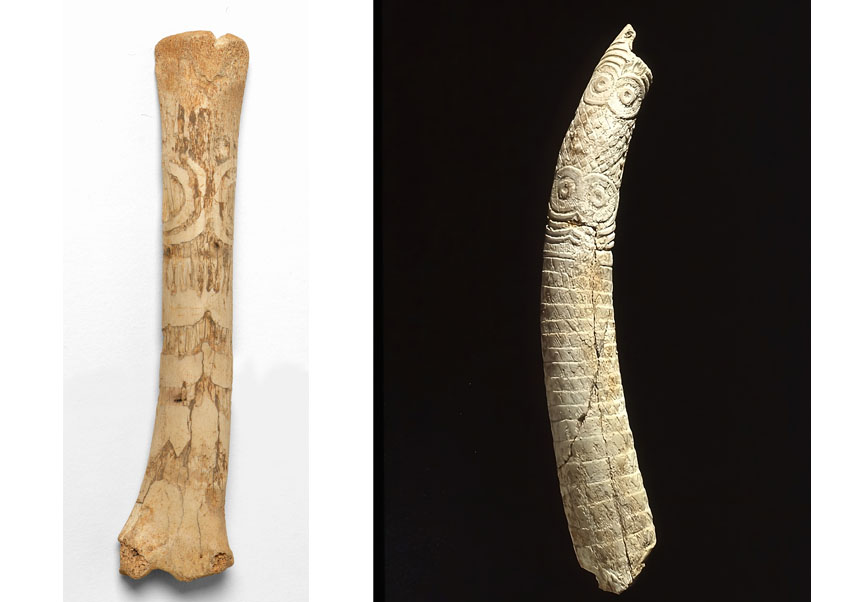
A Digital Archaeology pioneering study has revealed that the eyed idols of the Iberian Peninsula, prehistoric figures carved from long bones that represent eye-shaped motifs, had their original focus in the south of the current province of Valencia and the north from that of Alicante, specifically the basin of the Serpis river, and from there they expanded to those of the Tajo-Júcar rivers, and also towards the Segura-Guadiana. The study of one hundred of these pieces and their characterisation has been published in the Journal of Archaeological Science: Reports.
The author of the work, Joaquín Jiménez-Puerto, researcher at the Department of Prehistory, Archaeology and Ancient History of the University of Valencia, highlights that with conventional archaeological techniques it has not been possible to decipher the narratives of the idols, despite them being pieces that for decades have aroused great fascination and mystery in archaeological research. These pieces, very common in the southern half of the Iberian Peninsula, have been found in caves and megalithic funerary contexts from about 5,000 years ago, in the period of the Copper Age.
The eyed idols are carved mainly in bone and stone, and show the religious beliefs and social practices of their creators, in addition to explaining cultural interactions and the expansion of human groups in the Iberian Peninsula. Specifically, analysis of these artifacts suggests a significant cultural connection between the Serpis River region; the culture of Almería, located further south, and the Tajo valley, to the north.
“This link highlights a possible route for the exchange and dissemination of ideas and techniques between geographical areas that, although separated by hundreds of kilometres, shared common symbolic features in their artistic expressions”, highlights Joaquín Jiménez-Puerto, researcher of the Prometeo program for groups of excellence of the Valencian Government.
The tool based on computer vision algorithms that this researcher has used concludes that from the La Pastora of Alcoi site this art expanded towards the west and north, with which the axis of the Júcar and Tajo rivers was the closest limit. northern, and the axis of the Segura and the Guadiana the southern and western border, in a later dating. Thus, there are numerous archaeological pieces from the Guadiana axis or the current area near Madrid, dated later than those from the Valencian sites.
“The analysis of visual patterns in material culture objects has been a central part of archaeological practice, but has typically relied on qualitative methods. With digital archaeology, there has been a growing interest in developing more objective and quantitative techniques to compare and classify objects based on visual attributes”, explains Jiménez-Puerto.
The article presents a methodology that, based on 100 images, uses computer vision and machine learning algorithms to extract robust visual descriptors from the decorative patterns of the images and clusters them in an unsupervised manner.
Article reference: J. Jiménez-Puerto: «Beyond the naked eye: Employing machine learning and computer vision to explore Iberian oculated idols decorative patterns». Journal of Archaeological Science: Reports 55 (2024) 104521. DOI: https://doi.org/10.1016/j.jasrep.2024.104521
Annex photo caption:
- Joaquín Jiménez-Puerto, researcher at the Department of Prehistory, Archaeology and Ancient History of the University of Valencia.

.jpg)










